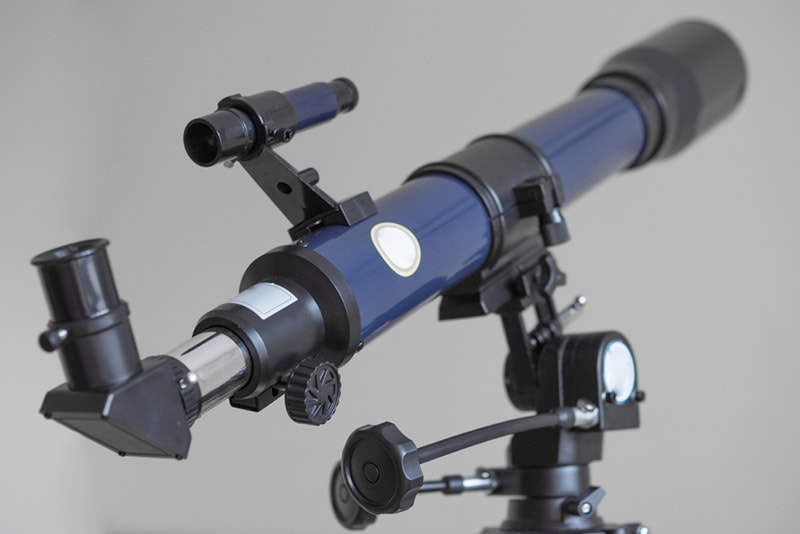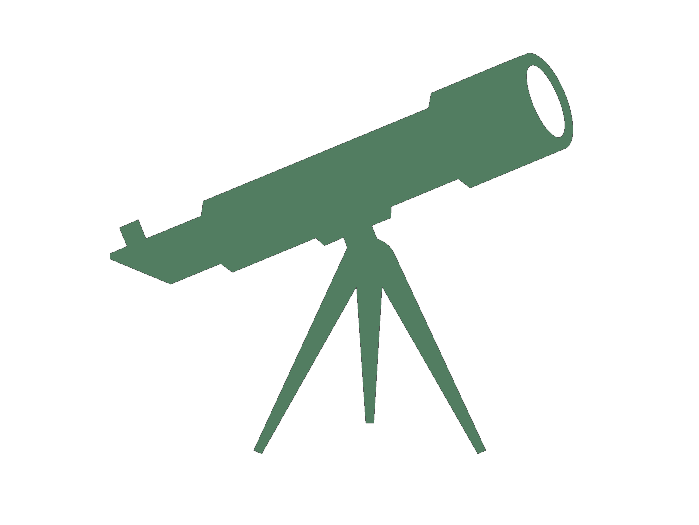How to Clean a Telescope Mirror: 8 Expert Tips
Last Updated on

The mirror is the primary optical element of your telescope. If it collects dust or debris, you will experience an obstruction in light entering the telescope, resulting in reduced clarity and image quality.
Over time, the debris accumulates on the mirror and causes unwanted reflections. It may also lead to optical aberrations, due to which you may see hazy images.
It’s important to clean your telescope mirror regularly to maintain its performance and optical quality. Here are some expert tips for doing this right.

The 8 Tips for Cleaning a Telescope Mirror
1. Choose the Right Tools

While cleaning your telescope mirror is important, you don’t want it to be the reason the lens gets damaged. So, you must choose the proper cleaning tools to clean the delicate mirror.
- Soft Camel Hair Brush: The camel hair brush is soft enough to prevent damage. But it can reach hard-to-access areas to remove large dust particles. Avoid using regular household brushes.
- Lens Cleaning Solution: Get a specialized lens cleaning solution from your local optical shop. Ask for a solution designed for the type of coating on your telescope mirror. Use this solution with a lint-free cloth to remove fingerprints or smudges from the mirror.
- Compressed Air Canister: You can use a can of compressed air to blow dust and debris from the telescope mirror. However, canned air sometimes contains chemicals that stain the mirror. So, be wary about their use or get specialized canisters.
- Microfiber Cloth: Use a soft microfiber cloth to wipe the surface of the mirror.
2. Wear Protective Gloves

When cleaning the telescope mirror, you don’t want to put more fingerprint stains or spots on it. Wear lint-free protective gloves. These will prevent fingerprint staining on the mirror. They will also protect you from the chemicals present in mirror cleaning solutions.
3. Prepare Your Work Area

Again, a telescope is a delicate instrument. So, you must ensure the work area where you clean it is dust-free.
If you’re cleaning it on a countertop or a table, clean the table and let it dry. Put down a towel on the table so that no surface can chip the mirror.
4. Take the Mirror Off for Cleaning
If you’ve not done this before, it might help to watch a video online. Or you can use these steps:
- Loosen the locking screws and the collimation on the telescope using a Phillips head screwdriver.
- Remove other electronics, such as fans, completely. You can check the user’s manual to see if you’ve missed a connection.
- Number the screws and other components so that you know where they go when you’re reassembling.
- Take a picture of every step to make the assembly easier.
After you’ve removed the mirror from the telescope, you can now clean it.
5. Use Distilled Water

After removal, the first step in cleaning the mirror is to blow air on it to remove the dust and debris. Then, put the mirror under warm running water to remove the stubborn debris.
If you haven’t cleaned the mirror in a long time, you might have to change the water a few times. But if the water is too hard, its mineral components will settle on the mirror’s surface. Use distilled water instead.
6. Use Soaps on Their Own

Some astronomers prefer using a mixture of dish soap and water than simply water to clean the telescope mirror. Good old Dawn dish soap leads to a decently clean mirror.
Start by submerging the mirror in just water. If you’re not happy with the results, add a few drops of dish soap to the warm water.
When using soaps, do not apply them in combination with other liquids, such as skin softeners. These can coat the mirror, reducing its clarity.
7. Use a 98% Isopropyl Alcohol Solution

If you’re not a fan of soapy water, you can also use 98% isopropyl alcohol instead. Dilute the alcohol by 70% with distilled water to create your DIY cleaning solution.
Apply this solution to the mirror with a cotton ball and use light pressure to remove the visible dirt and debris. Only use this method if you know what type of coating your mirror has and if it’s safe to use alcohol on it. Alcohol might dissolve some coatings, making the mirror unusable.
Consult the user’s manual of your telescope to check this.
8. Clean Your Telescope Once a Year
Ideally, you should only clean your telescope once per year. But if you use it excessively, you might clean it twice.
Some people are skeptical about cleaning telescope mirrors since they think cleaners and brushes can damage the mirror. But if you follow the correct technique, you have nothing to worry about.

How to Tell if the Telescope Mirror Coating Is Damaged
Is there that one spot on your telescope mirror that refuses to budge? It’s possible that the spot is not debris and the mirror is chipped in that area. Here are some ways to check if the coating is damaged:
- If the surface of the mirror is hazy or has scratches, the coating may be damaged.
- Check the reflection of light from the mirror. A damaged mirror results in dim or fuzzy reflections.
- The mirror may be damaged if the water leaves streaks or soaks into the surface during cleaning. On the contrary, water beads when it’s on an intact mirror.
If the mirror is damaged, you can get it recoated. In this process, the experts strip the old coating off the telescope mirror and replace it with a new one.

Conclusion
Cleaning the telescope mirror can be a good way to extend the instrument’s lifespan and maintain its efficiency. Use distilled water, alcohol, or a soapy solution to clean the mirror’s surface.
Be gentle and use lint-free microfiber cloths to prevent staining the surface with your fingerprints. Always remember to consult the user’s manual of your telescope to check the type of coating and its compatibility with different cleaners.
Featured Image Credit: Miglena Pencheva, Shutterstock
About the Author Jeff Weishaupt
Jeff is a tech professional by day, writer, and amateur photographer by night. He's had the privilege of leading software teams for startups to the Fortune 100 over the past two decades. He currently works in the data privacy space. Jeff's amateur photography interests started in 2008 when he got his first DSLR camera, the Canon Rebel. Since then, he's taken tens of thousands of photos. His favorite handheld camera these days is his Google Pixel 6 XL. He loves taking photos of nature and his kids. In 2016, he bought his first drone, the Mavic Pro. Taking photos from the air is an amazing perspective, and he loves to take his drone while traveling.
Related Articles:
How to Collimate Binoculars: 9 Expert Tips
How to Clean a Refractor Telescope: Step-by-Step Guide
How to Clean a Telescope Eyepiece: Step-by-Step Guide
How to Clean a Rifle Scope: 8 Expert Tips
How to Choose Binoculars for Bird Watching: 10 Expert Tips
Monocular vs Telescope: Differences Explained (With Pictures)
What Is a Monocular Used For? 8 Common Functions
Brightfield vs Phase Contrast Microscopy: The Differences Explained
